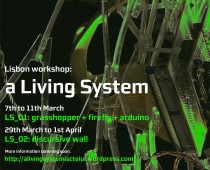“Fablab” is a short term for “Fabrication Laboratory”, or, like some people prefer to call it,, “Fabulous Laboratory”. The concept was developed in the Center for Bits and Atoms (CBA) of the Massachussets Institute of Technology (MIT), through a course named How to do (almost) anything, lectured by Prof. Neil Gershenfeld.
A FabLab consists of a set of digital fabrication tools for rapid prototyping, such as milling machines, laser cutter, vynil cutter machines, electronics workbench, computers and programming tools, supported by open source software. This is a concept created for the community, based on “Learn by doing” education, providing the ideal environment for invention. The projects are conceived in 2D (in the computers) and get real in 3D (by the machines).
What kind of things you can do in the Fablab? Almost anything, it is your imagination that rules! Currently the labs include computer controlled machines with spatial resolution down to microns, and electronics that have time resolution in microseconds. The ability to design and innovate in microns and microseconds puts powerful capabilities into the hands of Fablab users. Communication devices, sensing technologies, building structures, arts and crafts – all are within reach using the tools and materials in a Fablab. High profile projects made in Fablabs include: solar and wind turbines, wireless data nteworks,a press fit house (no nails, no cement), long range antennas, and sheep sensing and tracking devices. It is an exciting and empowering place to create and innovate, and most users are quite passionate about the lab.
This text was adapted from the Sherry J. Lassiter paper “On the road to the future: Mobile Fablabs for Technical Education”.

